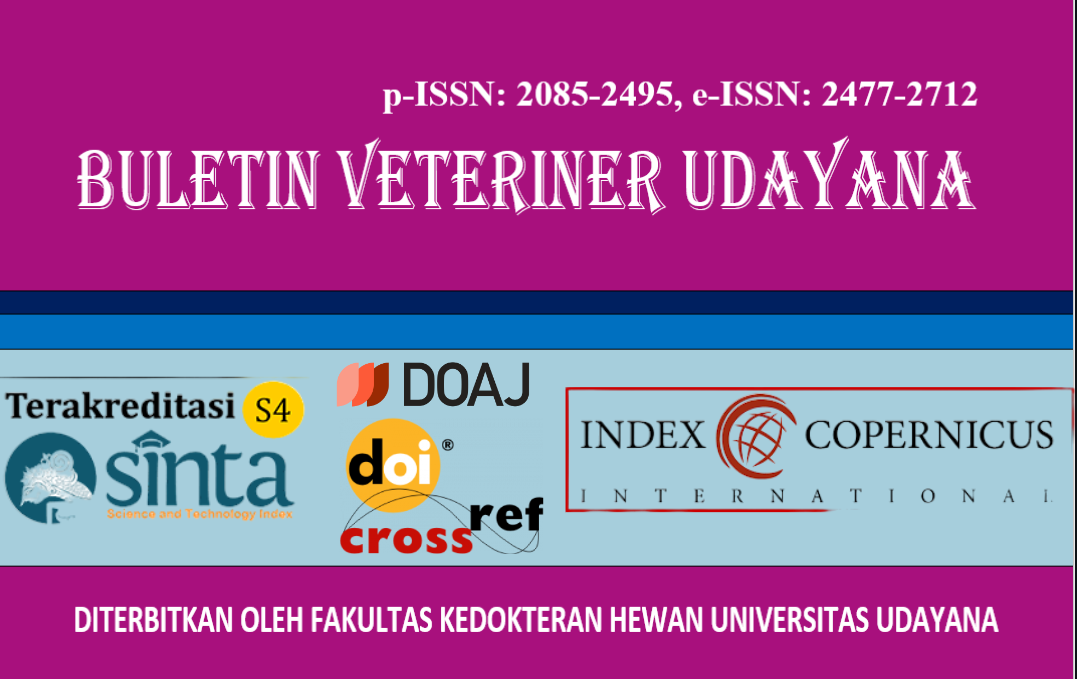CHRONIC ASPERGILLOSIS IN BROILER CHICKEN DUE TO SUBOPTIMAL COOP SANITATION MANAGEMENT
DOI:
https://doi.org/10.24843/bulvet.2025.v17.i05.p16Keywords:
Aspergillosis, Ayam Broiler, Histopathology, AspergillusAbstract
Aspergillosis is an opportunistic mycotic disease that can lead to mortality in broiler chickens. This case study aims to report an occurrence of chronic systemic aspergillosis in broiler chickens associated with suboptimal coop sanitation management. The case involved a 25-day-old broiler chicken from a closed-house farm with a population of 18.000 birds. Diagnostic procedures included structured epidemiological interviews, necropsy, histopathological examination, and fungal isolation. The case showed a morbidity rate of 2.77%, mortality rate of 1.11%, and a case fatality rate of 40%. Histopathological findings characteristic of aspergillosis included granulomatous pneumonia with septate hyphae, multifocal inflammation, and tissue necrosis. Systemic lesions were observed in other organs such as hepatitis, glomerulonephritis, splenitis, proventriculitis, and encephalitis. Fungal isolation from the lungs, liver, and kidneys revealed colonies of A. fumigatus, A. flavus, and A. niger, microscopically confirmed using KOH and methylene blue staining. Suboptimal coop management, particularly poor litter replacement and humidity control, played a key role as a predisposing factor for chronic aspergillosis. Improved coop sanitation and routine evaluations are necessary to prevent Aspergillosis.




